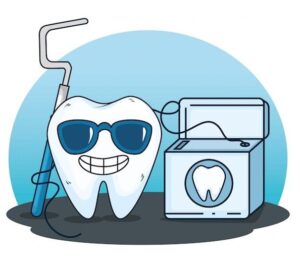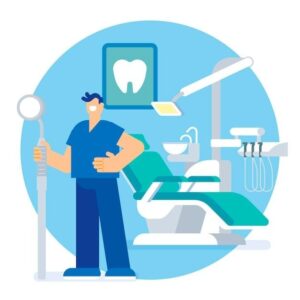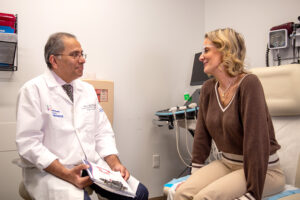Celebrate Dental advancements as they reshape oral health care, making treatments faster, more precise, and less painful. Over the years, dental professionals have introduced cutting-edge solutions that improve smiles and overall well-being. Today’s dental practices include everything from state-of-the-art orthodontics to innovative cosmetic dentistry designed to enhance patient comfort and efficiency.
The American Dental Association (ADA) reports that nearly 85% of adults in the U.S. recognize the importance of regular visits, showing a growing awareness of oral health services. This article explores the latest dental technology, insurance options, and treatment plans shaping the future of dentistry.

The Transformation of Modern Dental Practices
Dental care has evolved beyond basic cleanings and fillings. Today, advanced dental services ensure better oral health outcomes, improved patient experiences, and faster recovery times. Dental procedures have become more accurate and efficient with digital imaging, laser treatments, and 3D dental impressions.
The Role of Dental Technology in Improving Oral Health
Dental technology has revolutionized treatment plans and patient care. According to the National Institute of Dental and Craniofacial Research, over 47% of adults over 30 experience some periodontal disease. Advanced diagnostic tools now allow for early detection and more effective management.
- Digital X-rays: Reduce radiation exposure by up to 90%, improving safety while providing clearer images.
- Laser Dentistry: Minimizes pain and speeds up recovery for gum reshaping and cavity removal procedures.
- 3D Printing: Enables custom dental impressions and prosthetics, replacing lost teeth with greater accuracy.
These advancements contribute to the future of dentistry, ensuring better results and more comfortable patient experiences.
Cosmetic Dentistry
Cosmetic dentistry has gained popularity as more people seek to improve their appearance. The American Academy of Cosmetic Dentistry reports that 99.7% of adults believe a healthy smile is crucial in social and professional settings.
- Teeth Whitening: A quick procedure that removes stains and enhances brightness.
- Veneers: A long-lasting option for correcting chipped teeth or gaps.
- Dental Bonding: A cost-effective solution for minor cracks or discolouration.
These treatments improve aesthetics and contribute to dental health by strengthening natural teeth.
Orthodontics
Braces and aligners have changed significantly over the years. Traditional metal braces are now complemented by clear aligners, which provide a discreet alternative. Invisalign has treated over 14 million people, offering a nearly invisible method to straighten teeth.
- Self-Ligating Braces: Reduce discomfort and shorten treatment time.
- Clear Aligners: Custom-made trays that shift teeth gradually without metal brackets.
- Accelerated Orthodontics: Uses high-frequency vibrations or micro-osteoperforations to speed up tooth movement.
These developments have made orthodontic treatments more accessible and comfortable for patients of all ages. If you’re exploring these modern solutions in North Yorkshire, consulting an experienced Orthodontist in York can help ensure personalized care and optimal results.
Pediatric Dentistry
Children require specialized oral health care to prevent dental caries and establish healthy habits early on. According to the Centers for Disease Control and Prevention (CDC), over 52% of children aged 6-8 have cavities in their primary teeth. Pediatric professionals focus on:
- Fluoride Treatments: Strengthen enamel and prevent decay
- Dental Sealants: Reduce cavity risk in molars by 80%
- Early Orthodontic Evaluations: Help detect misalignment issues before they worsen
These preventive measures ensure children have stronger teeth and better oral health.
Periodontal Disease and the Importance of Gum Health
Gum disease affects millions of individuals yet is usually avoidable. The CDC estimates that approximately half of those over the age of 30 have periodontal disease. This condition increases the risk of tooth loss and can even affect overall health.
Effective treatments include:
- Scaling and Root Planing: Deep cleaning techniques that remove plaque below the gum line.
- Laser Therapy: Targets infected tissue while preserving healthy gums.
- Antimicrobial Rinses: Reduce bacterial growth and inflammation.
For daily gum care that complements professional treatments, many patients are turning to parodontax toothpaste alternative options like LivFresh—clinically proven to reduce plaque and promote healthier gums with a gentler, science-backed formula.
Regular dental visits and proper oral hygiene can significantly lower the risk of gum disease.
The Impact of Dental Insurance on Access to Care
Dental insurance plays a crucial role in making oral health services more accessible. The National Association of Dental Plans states that about 77% of Americans have dental coverage, with Delta Dental being the largest provider.
- Preventive Coverage: Covers cleanings, exams, and X-rays at little to no cost.
- Basic Procedures: Includes fillings and extractions with partial coverage.
- Major Treatments: Helps with costs of crowns, root canals, and replacing missed teeth.
Access to affordable insurance plans encourages more people to seek regular dental care, reducing long-term health issues.
Dental Schools and Training: Preparing Future Professionals
Dental schools play a vital role in the future of dentistry, ensuring that new professionals are well-trained in modern techniques. The American Dental Education Association reports that over 25,000 students graduate from dental programs each year.
Training covers:
- Advanced Diagnostics: Using AI-driven tools to detect dental illness early
- Minimally Invasive Procedures: Reducing discomfort for patients
- New Materials and Techniques: Enhancing the durability of dental restorations
These educational advancements help improve overall patient care and treatment outcomes.

Innovations in Dental Laboratories and Dental Offices
Dental laboratories and offices have embraced new methods to provide better services. From digital workflows to same-day restorations, today’s dental practices prioritize efficiency and precision.
| Innovation | Impact |
| CAD/CAM Technology | Enables same-day crowns and bridges with digital accuracy |
| AI Diagnostics | Improves detection of cavities and gum disease |
| Teledentistry | Expands access to oral health services in remote areas |
Final Words
Modern dental applications have transformed how people maintain their oral health. With cutting-edge technology, innovative treatments, and improved insurance coverage, dental visits have become more comfortable and accessible. As professionals refine their techniques, patients can expect even better results, making achieving a healthy smile easier.
FAQs
- How has dental technology improved patient care?
Digital X-rays, laser treatments, and 3D printing have made dental procedures faster, safer, and more precise. These innovations reduce discomfort, speed recovery, and improve treatment accuracy, improving long-term oral health outcomes.
- What is the biggest challenge in modern dentistry?
Access to affordable care remains a significant challenge. Despite advances in dental medicine, many Americans lack insurance or struggle with treatment costs. Expanding coverage and increasing awareness can help more people benefit from essential oral health services.
- How can cosmetic dentistry impact oral health?
Cosmetic procedures like veneers, bonding, and teeth whitening enhance appearance and strengthen teeth. Properly aligned and restored teeth reduce the risk of dental disease, making these treatments beneficial beyond aesthetics.






